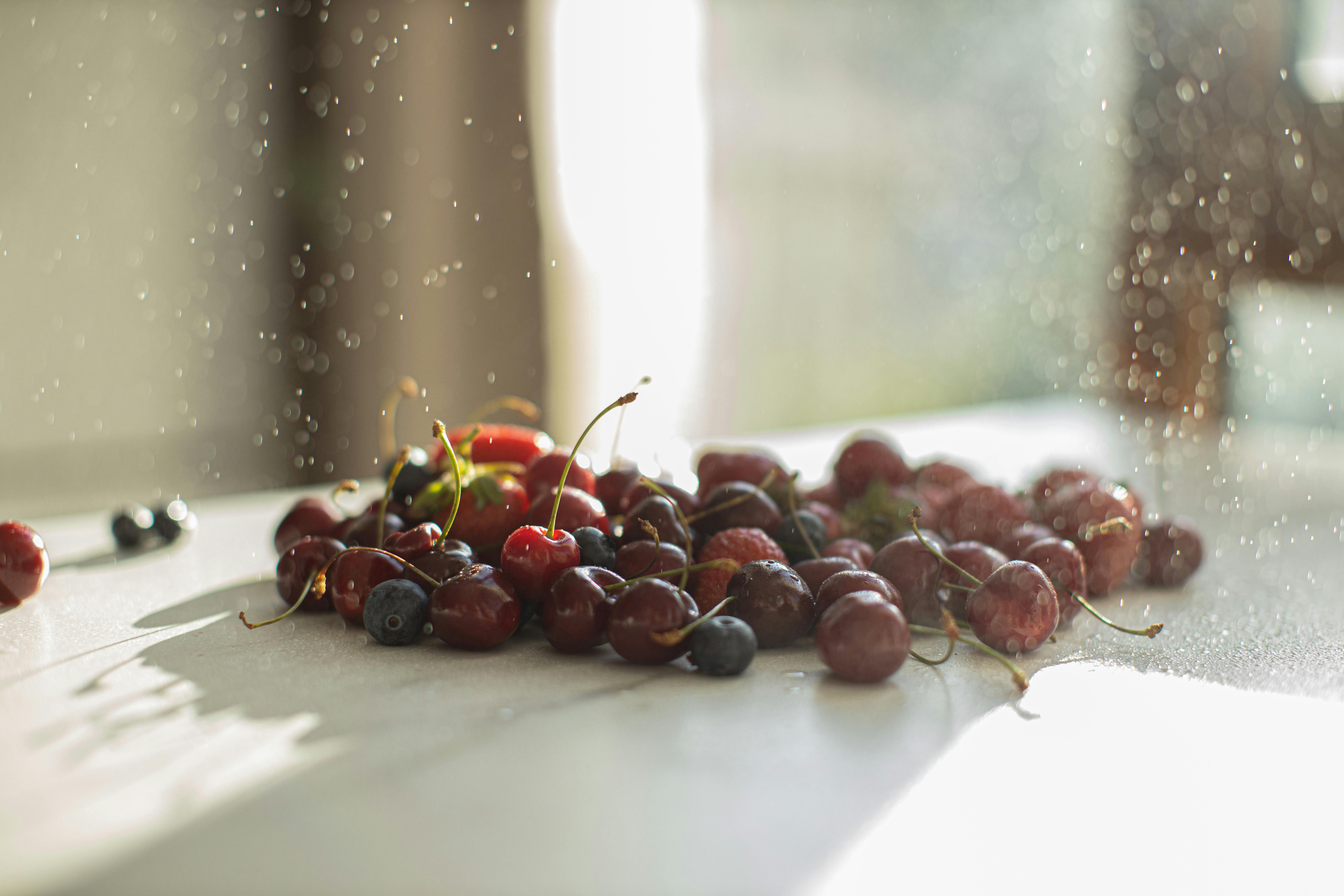Watering strawberries properly is an important part of successful strawberry gardening. Knowing how often and how much water to give your strawberry plants will help ensure that you have a healthy, plentiful crop of sweet, juicy berries. In this article, we’ll discuss how often you should water strawberries and other important tips for strawberry watering.Strawberries should be watered once or twice a week, depending on the weather. During periods of extreme heat, you may need to water them more often. Make sure to water the soil evenly and avoid wetting the foliage.
How Much Water Do Strawberries Need?
Strawberries are a popular fruit that require a lot of water to thrive. They are one of the most water-hungry crops and need an average of 2 inches of water per week. This can come from either rain or irrigation. It is best to provide enough water during the entire growing season, rather than over-watering at one time.
Strawberries prefer moist soil, but not soggy soil. If the soil is too wet, it can lead to root rot and other diseases that can damage or ruin the crop. To prevent this, it is important to check the soil moisture levels before watering. If the top inch of soil is dry, it’s time to water. Drip irrigation is often recommended for strawberry plants, as it helps keep the leaves dry and prevents fungal diseases from developing.
In general, strawberries should be watered deeply but infrequently. This will encourage deep root growth and help prevent against drought stress. During hot weather, plants may need more frequent watering in order to maintain healthy growth and fruit production. Mulching around strawberry plants can also help retain soil moisture and reduce weeds.
Overall, strawberries require consistent watering throughout their growing season in order to produce quality fruit. While it’s important not to over-water them, they should also have access to adequate amounts of water in order for them to thrive and produce sweet fruits for you to enjoy!
Weather
The weather is a major factor in determining the frequency of watering strawberries. In hot and dry climates, where there is little rainfall, the plants may need to be watered more frequently than in cooler, wetter climates. This is because water evaporates quickly in hot climates, depleting soil moisture more quickly. As such, the frequency of watering should be increased during hot spells and decreased during cooler spells. In addition, the amount of sunlight also affects how often water needs to be applied. Plants that are exposed to more direct sunlight will require more frequent watering than those which are shaded.
Soil Type
The type of soil used can also have an impact on how often water needs to be applied to strawberry plants. Soils with higher clay content hold onto moisture for longer periods of time than soils with a higher sand content, which tend to drain water away quickly. As such, soils with lower clay content may require more frequent watering than those with higher clay content. Additionally, soils that are high in organic matter can help retain moisture better than those with lower levels of organic matter.
Plant Age
The age of the strawberry plants can also affect their watering needs. Newly planted strawberries require more frequent watering as they become established and develop a root system that can access and absorb water from the soil. As the plants mature, they will need to be watered less frequently as their root systems become established and capable of absorbing larger amounts of moisture from the soil on their own.
Container Size
The size of container in which the strawberry plant is grown can also have an effect on how often it needs to be watered. Larger containers generally require less frequent watering than smaller containers since they have a larger volume of soil available for water storage and absorption. Conversely, smaller containers typically need to be watered more frequently since they have less available soil for moisture absorption.
Overall, there are several factors that affect how often strawberries need to be watered including weather conditions, soil type, plant age and container size. By taking into consideration these factors when determining a watering schedule for your strawberry plants you can ensure that they receive just the right amount of moisture for optimal growth and fruit production.
What Is the Best Time to Water Strawberries?
Watering strawberries at the right time is essential for a successful crop. The best time to water strawberry plants is in the early morning or evening when temperatures are cooler. This allows the water to get soaked into the soil and reach the roots of the plants without evaporating quickly. Additionally, it helps avoid fungal diseases that can be caused by wet foliage during hot days. If you must water during a hotter part of the day, it’s best to water in small amounts and avoid wetting the leaves.
It’s important to keep strawberry plants adequately watered throughout their growing season, which can vary from region to region. Generally, strawberry plants need about an inch of water per week, either through rainfall or irrigation. If you’re using irrigation, try to apply water slowly and evenly across your entire strawberry patch so that all plants get an equal amount. Watering too much can cause root rot, while not watering enough can reduce your yields and stunt growth of the strawberries.
Overall, keeping your strawberry plants well-watered is key for a successful crop! Aim for an inch of water per week in cooler parts of the day such as early morning or evening hours. Doing this will help ensure that your strawberry plants stay healthy and produce plenty of delicious fruit!
Knowing When to Water Your Strawberry Plants
Water is an essential part of any plant’s life cycle, and that is especially true for strawberries. Knowing when and how much to water your strawberry plants is key to getting a successful harvest. To ensure that your strawberries have the right amount of water, it’s important to understand the different stages of growth and how they affect your watering schedule.
When you first plant your strawberry plants, it is important to give them plenty of water so that the roots can take hold and begin to grow. This should be done on a regular basis until the plants are established. After the plants are established, you should reduce watering frequency but still make sure that the soil is moist. This will help promote healthy root growth and provide the necessary nutrients for optimal fruit production.
As your strawberry plants begin to flower and form berries, you will need to increase the amount of water you give them. This will ensure that the fruits develop properly and will help prevent them from cracking or splitting due to lack of moisture. You want to avoid over-watering as this can cause fungal diseases in your strawberries.
When watering your strawberry plants, it is important to make sure that you are providing enough water but not too much. The best way to check for adequate moisture levels is by sticking your finger into the soil up to about an inch deep. If it feels moist then it’s likely okay, but if it feels dry then you may need to add more water. You should also watch out for any signs of wilting or discoloration in leaves as this could also indicate a lack of sufficient moisture levels in the soil.
Finally, during hot summer months when temperatures soar above 90 degrees Fahrenheit, you may need to increase watering frequency even more for optimal results. Make sure that you are never letting the soil dry out completely as this can cause irreparable damage and lead to poor fruit production or even death of your plants altogether!

Signs That Your Strawberry Plant Needs Watering
Strawberry plants require regular watering to remain healthy and produce the sweet fruit that we all know and love. If you notice that your strawberry plant is struggling, it may be a sign that it is not getting enough water. Here are some common signs that your strawberry plant needs watering:
The leaves of the plant will start to wilt and droop if it is not getting enough water. Wilted leaves can also become discolored, turning yellow or brown in color. You may also notice that the stems are becoming weak and spindly, which can be an indication of dehydration.
The soil around the plant should also be checked for dryness. If you can easily stick your finger into the soil without any resistance, then it is likely too dry and needs more water. You may also notice that the soil has developed a crust on top, which could be a sign that moisture is lacking in the area.
Another telltale sign of dehydration in strawberry plants is decreased fruit production. When a strawberry plant isn’t receiving enough water, it won’t be able to produce as many berries as it normally would. The fruits will also appear smaller than normal and won’t have as much flavor as they would if they were adequately hydrated.
If you notice any of these signs in your strawberry plant, then it’s important to take action right away by giving it a good watering. With proper care and attention, you can ensure that your strawberry plants remain healthy and produce delicious strawberries for many years to come!
Determining Your Strawberry Plant’s Water Needs
Knowing how much water your strawberry plants need is key to their success. Watering them too little can stunt their growth, while too much can cause root rot and other diseases. To make sure you give your plants the right amount of water, there are a few things you should consider.
First, you should assess the soil type in your strawberry patch. Sandy soils tend to require more frequent watering than clay soils, so if you have sandy soil, you may need to water more often. Also consider the climate in your area; if it is hot and dry for long periods of time, your strawberry plants will require more water than if it’s cool and humid.
Second, look at the size of your strawberry patch and calculate the amount of water it needs based on the size of the patch. A good rule of thumb is to provide one inch of water per square foot each week. This can be done with a hose or by setting up an irrigation system that distributes water evenly throughout the patch.
Third, observe how your plants respond to different levels of watering. If they seem wilted or pale, they may not be getting enough water; if they’re soggy or discolored, they may be getting too much. Adjust accordingly until you find the right balance for your plants.
Finally, pay attention to weather changes throughout the season as these will affect how often and how much you need to water your strawberries. If it’s particularly hot or dry for an extended period of time, increase watering accordingly; if it starts raining regularly late in the season, reduce watering gradually so that plants don’t get over-saturated.
By taking these factors into consideration and monitoring your plants carefully, you can make sure that they get just the right amount of water throughout their growing season so that they remain healthy and productive!
Watering Your Strawberry Plants
Properly watering your strawberry plants is essential for successful harvest. It’s important to give your strawberries enough water during the growing season to keep them healthy and productive. Here are some tips for properly watering your strawberry plants:
1. Water your strawberry plants at the base of the plant rather than over the leaves. This will help reduce the risk of disease and mildew.
2. Water early in the morning so that any excess moisture has time to evaporate throughout the day.
3. If you are in a dry climate, water your strawberry plants every day or every other day, depending on how hot it is. If you live in a humid climate, you may only need to water every three or four days.
4. When you water your strawberries, make sure to give them a deep soak so that their roots can absorb as much moisture as possible.
5. Consider using mulch around your strawberry plants to help retain moisture in the soil between waterings.
6. Don’t over-water your strawberry plants as this can lead to root rot and other diseases.
By following these tips, you can ensure that your strawberry plants get the proper amount of moisture they need for healthy growth and abundant harvests!

Conclusion
Strawberries need a consistent water supply to stay healthy and produce a good crop of fruit. Depending on the time of year, this could mean watering your strawberries daily or twice a week. You should always feel the soil before watering and make sure that it is dry at least an inch below the surface before you add more water. You will also need to monitor your strawberries for signs of overwatering, such as wilting leaves or fungal growth. With proper care and attention, you can ensure your strawberries get just the right amount of water they need to thrive.
When it comes to watering your strawberry plants, the key is consistency. Try to create a regular schedule so that your plants can develop strong root systems and produce a healthy crop of fruit. If you manage their water needs carefully, you can ensure that your strawberries stay hydrated and happy all season long!



